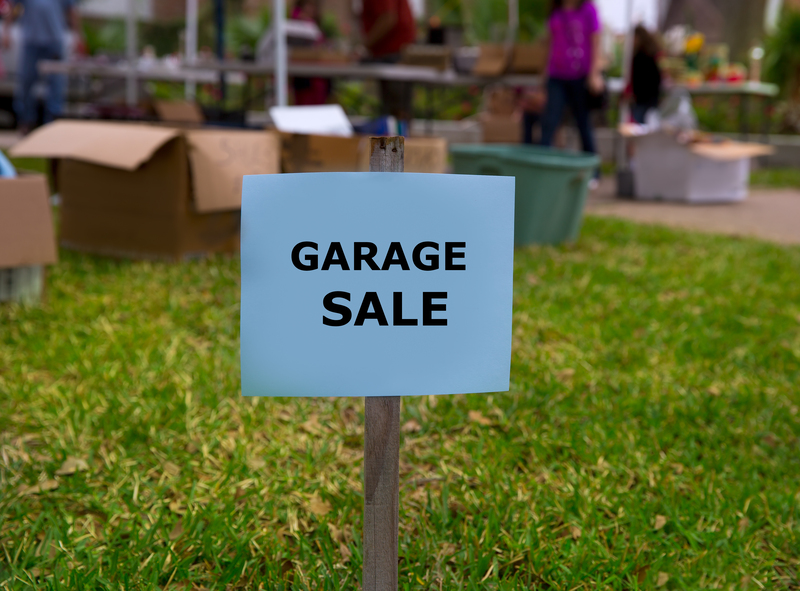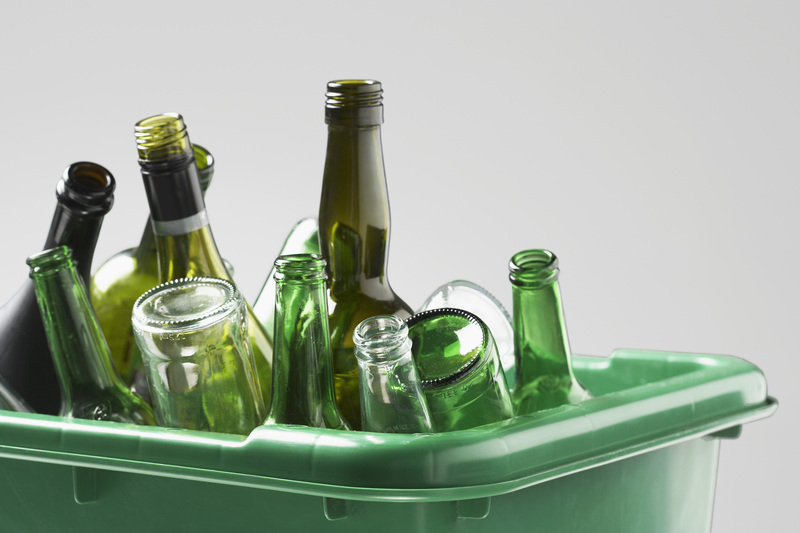How to Prep Old Pots and Pans for the Recycling Center
Are your old pots and pans taking up space in your kitchen cabinets? Before tossing them away, consider recycling them! For environmentally conscious home cooks and anyone seeking a sustainable lifestyle, bringing cookware to the recycling center is a smart and responsible move. However, most recycling centers have specific requirements for how you present your old kitchen items. In this comprehensive article, we'll walk you through the step-by-step process of prepping old pots and pans for recycling, ensuring your efforts have maximum positive impact.
Why Recycle Old Pots and Pans?
Recycling old cookware is beneficial for several reasons:
- Reduces landfill waste: Metal items do not decompose easily, so recycling them conserves landfill space.
- Saves resources: Scrap metals can be melted down and reused, minimizing the need for raw material extraction.
- Reduces environmental impact: Recycling helps decrease pollution and energy usage compared to manufacturing new products from scratch.
- Supports local economies: Many towns have vibrant recycling industries that process and repurpose metal kitchenware.
But to unlock these benefits, you must prep your old pots and pans for the recycling center correctly. Let's dive into the steps you need to follow.

Step-by-Step Guide: Preparing Old Cookware for Recycling
1. Determine If Your Pots and Pans Are Recyclable
Before doing anything else, it's vital to check if your old cookware can be recycled locally. Here's how:
- Contact your local recycling center: Policies vary, so call or visit their website to see what they accept.
- Check for recycle numbers or symbols: While rare on cookware, some modern pans have labels that indicate recyclable materials.
- Review the material composition: Most recycling programs accept ferrous (magnetic) and non-ferrous metals like stainless steel, aluminum, and copper.
- Certain nonstick coatings and glass lids may not be accepted--check before proceeding.
2. Sort Pots and Pans by Material Type
Separate your cookware by type and material for easier processing at the recycling center:
- Stainless Steel: Durable, rust-resistant, and widely accepted in metal recycling.
- Cast Iron: Often accepted but very heavy. Some centers require it to be in specific bins.
- Aluminum: Lightweight and highly recyclable; remove plastic or rubber parts first.
- Copper: Less common but valuable. Some recyclers buy copper separately.
- Nonstick pans (Teflon or ceramic): May require the coating to be removed, or may not be accepted at all due to chemicals.
Pro tip: Use a magnet to quickly check if your pan is ferrous (magnetic) or non-ferrous (non-magnetic)--this helps recyclers sort items at facilities.
3. Remove Non-Metal Attachments
Handles, lids, and knobs might not be recyclable if they are made of plastic, wood, or silicone. Here are steps to prepare your pots and pans:
- Unscrew or pry off plastic, wood, or rubber handles using a screwdriver or pliers.
- Remove glass lids or separate them into their own recycling (check with your center if glass is accepted).
- Dispose of non-metal parts according to your local waste guidelines.
- Tip: Some recycling centers, especially scrap yards, will accept whole pots and pans but prefer them cleaned and stripped.
4. Clean and Rinse Thoroughly
Just like you rinse out cans and bottles, old cookware should be clean and free of food residue. Dirty pots and pans are often turned away at the recycling center.
- Scrub off all caked-on food, oil, and rust if possible.
- Wash with hot soapy water and allow to dry completely.
- For stubborn stains or burnt residue, consider using a paste of baking soda and water or soaking overnight.
5. Remove Nonstick or Ceramic Coatings If Required
Nonstick pots and pans require extra steps because the coatings--such as Teflon--can complicate metal recycling. Here's what to do:
- Check with your recycler: Some accept nonstick pans as-is, some require you to remove the coating, and others don't accept them at all.
- If removal is required, mechanically scrape away as much coating as possible or use sandpaper/steel wool for abrasive removal (note: not all centers require full removal).
- Do not burn off nonstick coatings. Fumes can be hazardous!
6. Check for Hazardous Materials
Some antique or imported cookware may contain hazardous materials such as lead, cadmium, or unsafe glazes. These should NOT go in regular recycling. Instead:
- Conduct research or testing if you suspect hazardous materials (lead testing kits are available hardware stores).
- Contact your municipality to find out where hazardous household waste should be disposed of.
7. Decide Where to Take Your Pots and Pans
Not all recycling centers process cookware equally. Here are your options:
- Municipal curbside recycling: Rarely accepts pots and pans due to size and material.
- Specialty metal recycling centers: Most receptive to old pots and pans--find one using an online search for "scrap metal recycling near me."
- Scrap yards: Will often pay for ferrous and non-ferrous metals by the pound.
- Charitable organizations or donation centers (for items still in good condition).
Alternative Ways to Reuse or Donate Old Pots & Pans
While bringing cookware to the recycling center is responsible, consider giving your pots and pans a second life:
- Donation: If still usable, donate to shelters, thrift stores, or organizations supporting those in need.
- Repurpose at home: Use large pots as outdoor planters, birdbaths, or tool caddies.
- Art and craft projects: Upcycle into creative household decor--pans can be transformed into clocks or wall hangings.
- Share with neighbors or local groups: Offer on community platforms, like Freecycle, Facebook Marketplace, or Buy Nothing groups.
Frequently Asked Questions About Recycling Pots and Pans
Can Nonstick Pans Be Recycled?
It depends on your local recycling center's policy. If accepted, they may require the coating to be removed, as Teflon and similar substances do not recycle with metal. If not acceptably prepped, nonstick pans may go to the landfill. Always check first!
Are Glass Lids Recyclable?
Usually not in curbside bins, but some centers accept tempered glass if sorted separately. Never recycle broken glass--dispose of safely in trash if necessary.
Is It Safe to Recycle Burnt or Damaged Cookware?
Yes, as long as it's clean and free of hazardous materials. Major dents, warps, or burns don't prevent metal recycling, but coatings or residues might.
Should I Remove Screws and Bolts?
Removing screws and bolts helps with sorting but isn't always necessary; check with your local center. If made from a different metal (like brass), they can be recycled separately.
Does the Color or Paint on the Pan Matter?
Painted cookware is largely accepted, but avoid recycling any cookware with suspicious or potentially toxic paints, especially on vintage items. If unsure, ask your recycling provider.

Tips for Eco-Friendly Kitchen Decluttering
- Prevent future waste by investing in durable cookware--stainless steel and cast iron items last for decades.
- Buy pans with replaceable parts (like handles or knobs), so you can repair instead of replace.
- Look for cookware brands with take-back or recycling programs--many now offer this service.
- Stay organized: Regularly sort through your kitchen tools and donate or recycle responsibly.
Conclusion: Recycle Old Pots and Pans Responsibly
Recycling old cookware is simple if you follow the proper steps:
- First, check local recycling requirements and sort cookware by material.
- Remove nonmetal attachments, clean thoroughly, and prep surfaces as required.
- Bring to the appropriate recycling center or scrap yard, or consider creative reuse or donation when suitable.
By responsibly prepping your old pots and pans for the recycling center, you're helping keep valuable resources in circulation and reducing your household's environmental footprint. Every step matters in building a greener, cleaner community--so gather your old pans, roll up your sleeves, and give them a new life today!
